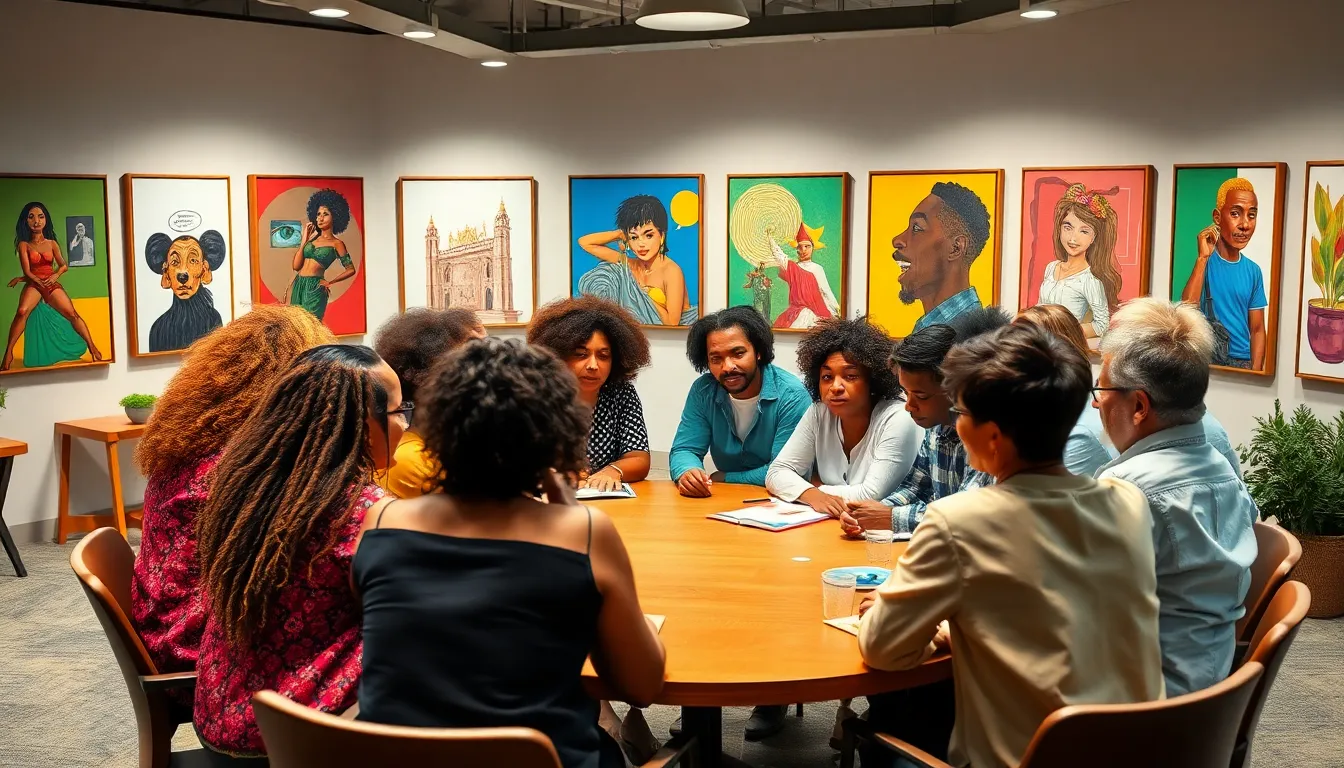In a world bursting with opinions and viewpoints, perspective variety isn’t just a buzzword—it’s the secret sauce to creativity and innovation. Imagine a dinner party where everyone brings their own dish; the more diverse the menu, the more tantalizing the feast. When it comes to ideas, mixing perspectives can turn a mundane discussion into a gourmet experience.
Table of Contents
ToggleUnderstanding Perspective Variety
Perspective variety involves incorporating different viewpoints to enrich discussions and decision-making processes. This concept encourages an appreciation for the unique contributions each individual can make.
Definition of Perspective Variety
Perspective variety refers to the range of viewpoints that individuals bring to any situation. It includes differences in experiences, beliefs, backgrounds, and cognitive styles. This variety ensures that discussions include multiple angles, which can lead to more comprehensive solutions and insights. Whether in a group setting or a creative process, diversity in perspectives provides depth to problem-solving and enhances overall understanding.
Importance of Perspective Variety
Perspective variety holds significant importance in today’s interconnected world. It fosters creativity by allowing individuals to explore concepts beyond their usual frameworks. Diverse viewpoints challenge assumptions, leading to innovative ideas. Enhanced collaboration results from incorporating various perspectives, as teams can address issues more comprehensively. Encouraging such an environment not only improves outcomes but also promotes inclusivity, ensuring that all voices are heard and valued.
Applications of Perspective Variety

Perspective variety finds applications across various fields, enriching experiences and fostering creativity. Different domains harness this concept to enhance understanding and collaboration.
In Literature and Art
In literature, diverse perspectives shape storytelling. Authors incorporate varied viewpoints, contributing depth and complexity to narratives. Readers encounter multifaceted characters and scenarios, engaging with a richer, more immersive experience. Visual artists often blend different styles and cultural influences, resulting in unique expressions. Each piece reflects a multitude of interpretations, inviting audiences to explore and contemplate varied meanings.
In Social Sciences
Social sciences leverage perspective variety to examine human behavior. Researchers consider multiple viewpoints to understand complex social phenomena. Diverse input leads to more inclusive policies and interventions. In group discussions, varied experiences foster deeper insights into societal issues, driving innovative solutions. This approach challenges assumptions and encourages critical thinking, making the examination of social constructs more comprehensive.
Benefits of Embracing Perspective Variety
Incorporating diverse viewpoints leads to numerous benefits within discussions and decision-making processes.
Fostering Creativity
Creativity flourishes when individuals share distinct experiences and ideas. Different viewpoints inspire innovative solutions that singular perspectives might miss. Teams that encourage input from various backgrounds generate a broader range of concepts. Participants often find that fresh ideas emerge when they’re exposed to contrasting opinions. By valuing unique perspectives, groups transform ordinary brainstorming sessions into dynamic creative huddles. Taking advantage of this variety, organizations consistently produce more engaging and original outputs.
Enhancing Critical Thinking
Critical thinking improves through the examination of multiple perspectives. Engaging with diverse viewpoints challenges preconceived notions and stimulates deeper analysis. Individuals develop stronger arguments by considering alternative opinions, promoting a more nuanced understanding of complex issues. This approach encourages participants to question their assumptions, leading to well-informed decisions. By integrating various perspectives, discussions become richer, and participants hone their analytical skills. Ultimately, teams equipped with diverse interpretative lenses can tackle problems more effectively and inclusively.
Challenges in Achieving Perspective Variety
Achieving perspective variety faces several significant challenges. Addressing these hurdles is essential for fostering inclusive discussions and enriched decision-making.
Cultural and Social Barriers
Cultural differences often create barriers to achieving perspective variety. Individuals with differing cultural backgrounds may struggle to express their viewpoints due to fear of judgment or misunderstanding. Social norms frequently dictate how openly individuals share opinions, leading to a lack of diverse input in discussions. Language discrepancies can further complicate communication, inhibiting clarity and understanding. These barriers can discourage individuals from contributing, hindering the richness that comes from diverse perspectives. Strategies such as promoting cultural sensitivity and encouraging respectful dialogue can mitigate these challenges.
Cognitive Biases
Cognitive biases significantly impact the ability to embrace perspective variety. Individuals often favor information that confirms their existing beliefs, known as confirmation bias. This tendency restricts openness to alternative viewpoints, leading to skewed discussions. Anchoring bias keeps individuals attached to initial impressions, preventing them from adjusting their viewpoints based on new information. Additionally, groupthink can stifle creative thinking, as individuals may conform to the dominant opinion. Encouraging critical thinking and creating an environment where questioning is welcomed can overcome these cognitive obstacles, promoting a broader exchange of ideas.
Embracing perspective variety is essential for fostering creativity and innovation in any collaborative environment. By welcoming diverse viewpoints individuals and teams can unlock new ideas and solutions that might otherwise remain hidden. This approach not only enhances critical thinking but also encourages a culture of inclusivity and respect.
Overcoming the challenges associated with perspective variety requires commitment and open-mindedness. When teams prioritize dialogue and cultural sensitivity they create a space where all voices are heard. This commitment leads to richer discussions and more effective decision-making.
Ultimately the value of perspective variety lies in its ability to transform ordinary interactions into powerful exchanges that drive progress and understanding. By harnessing this diversity teams can navigate complexities and achieve success in today’s interconnected world.


